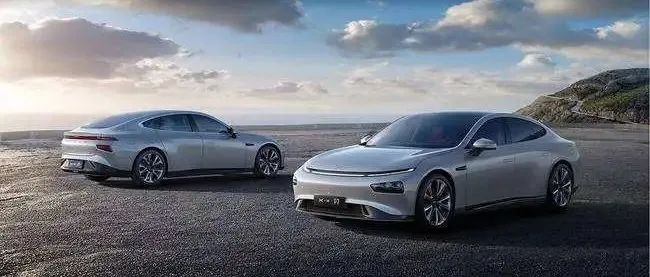Author | Wang Yunpeng
“My friend, I’m planning on buying the BYD Song Pro DM-i.”
“I was considering buying a gasoline-powered car before, but gas prices are too high. It’s better to buy a new energy vehicle instead.”
While sharing the joy of buying a car with me, my friend also expressed a hint of helplessness.
In fact, my friend’s sensitivity to gasoline prices is not unreasonable.
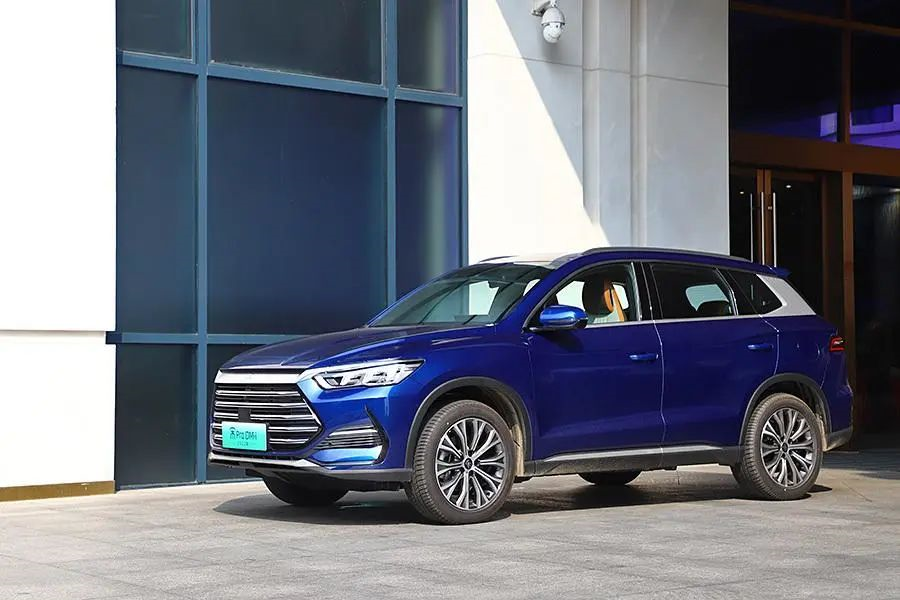
After 24:00 on March 17th, the price of 95 gasoline bid farewell to the 8 yuan mark, entering into the era of 9 yuan. This is the fifth time that the retail ceiling price of refined oil has been raised this year, twice in January and once each in February and March.
After five price hikes, the domestic prices of gasoline and diesel have respectively increased by 2015 yuan and 1940 yuan per ton, which is equivalent to an increase of 1.58 yuan, 1.67 yuan, and 1.65 yuan per liter of 92 gasoline, 95 gasoline, and 0 diesel, respectively.
It’s worth mentioning that although choosing to buy new energy vehicles allows my friend to no longer worry too much about gas prices, it may be unavoidable to feel a bit “painful” in terms of the purchase price. Because, following the price increase in January this year, a new round of price increases for new energy vehicles has erupted, and BYD was not exempted.
More than a week, multiple new energy vehicle companies raised prices
“Where is there a discount? Just raised prices. NETA V increased by 3,000 yuan, NETA U increased by 5,000 yuan, it’s uncertain if there will be more price increases in the future.” When I went to a NETA 4S store closest to my residential area to ask about prices, the salesperson said so.
It is understood that the latest price adjustment of NETA automobiles was on the 18th. On March 17th, NETA Automobile released a statement about the price adjustment of vehicle models, stating that due to the rise in upstream raw material prices, the tight supply chain, and other factors, the price adjustment of on-sale models took effect from midnight on the 18th, with an increase ranging from 3,000 yuan to 5,000 yuan.
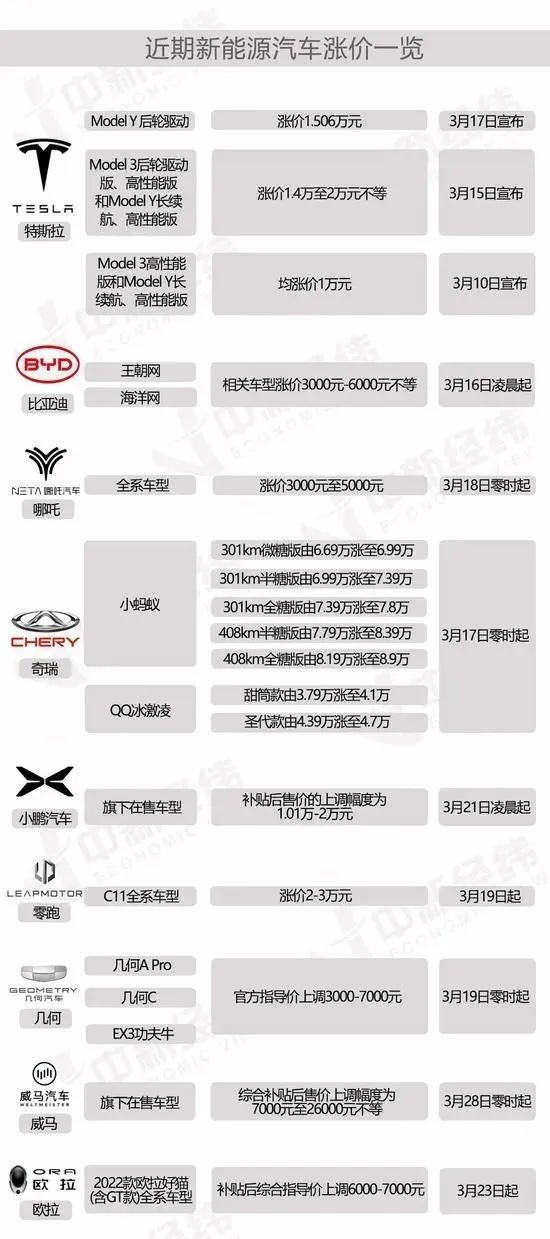 On the same day, Tesla also adjusted the starting price of the Model Y rear-wheel drive version to 316,900 yuan, an increase of 15,060 yuan. This is the third price increase for Tesla models this month, with the first two on March 10 and 15. On March 10, the starting prices of the Model 3 high-performance version and the Model Y Long Range and high-performance versions all increased by 10,000 yuan. On March 15, the starting prices of the Model 3 rear-wheel drive and high-performance versions increased by 14,200 yuan and 18,000 yuan, respectively, and the starting prices of the Model Y Long Range and high-performance versions increased by 18,000 yuan and 20,000 yuan, respectively.
On the same day, Tesla also adjusted the starting price of the Model Y rear-wheel drive version to 316,900 yuan, an increase of 15,060 yuan. This is the third price increase for Tesla models this month, with the first two on March 10 and 15. On March 10, the starting prices of the Model 3 high-performance version and the Model Y Long Range and high-performance versions all increased by 10,000 yuan. On March 15, the starting prices of the Model 3 rear-wheel drive and high-performance versions increased by 14,200 yuan and 18,000 yuan, respectively, and the starting prices of the Model Y Long Range and high-performance versions increased by 18,000 yuan and 20,000 yuan, respectively.
In fact, there are not only NIO and Tesla that have recently announced price increases. According to statistics, from March 15th to 20th, a total of 9 new energy vehicle companies including NIO, Tesla, BYD, and Chery New Energy have announced price increases. The price increase range of the models ranges from 3,000 yuan to 30,000 yuan.
Among them, Zero Run, which has always been known as the “Price Butcher” and “Ultimate Cost Performance”, was not an exception this time. The highest price increase of its entire C11 series models reached 30,000 yuan, making it the new energy vehicle company with the highest single price increase.
It is worth mentioning that the time announced and executed by the new energy vehicle companies that announced price increases this time was almost “zero lag”. Specifically, car manufacturers such as Zero Run, NIO, Geely, and Chery New Energy only released announcements one day in advance; BYD announced the price increase information through its official Weibo account at 23:50 on March 15th, and started to implement the new prices 10 minutes later.
Also, Li Xiang, CEO of Ideal Auto, stated on his personal Weibo account on March 19th that “the increase in battery costs in the second quarter is very unreasonable. Currently, brands that have already signed contracts with battery manufacturers on the price increase have almost immediately announced the price increase. Those that have not yet increased the price are mostly waiting for the price increase to be negotiated and will generally increase immediately afterwards.”
One of the drivers for the sudden price increases in multiple car companies is the skyrocketing prices of raw materials. This was also confirmed in a recent report by CICC, which stated, “According to feedback from car companies, cost increases are currently around 10-20%, with a corresponding increase of about 10,000 yuan per vehicle. In terms of cost, compared to bulk raw materials, the price increase of batteries in 2022 is a more significant direct factor.”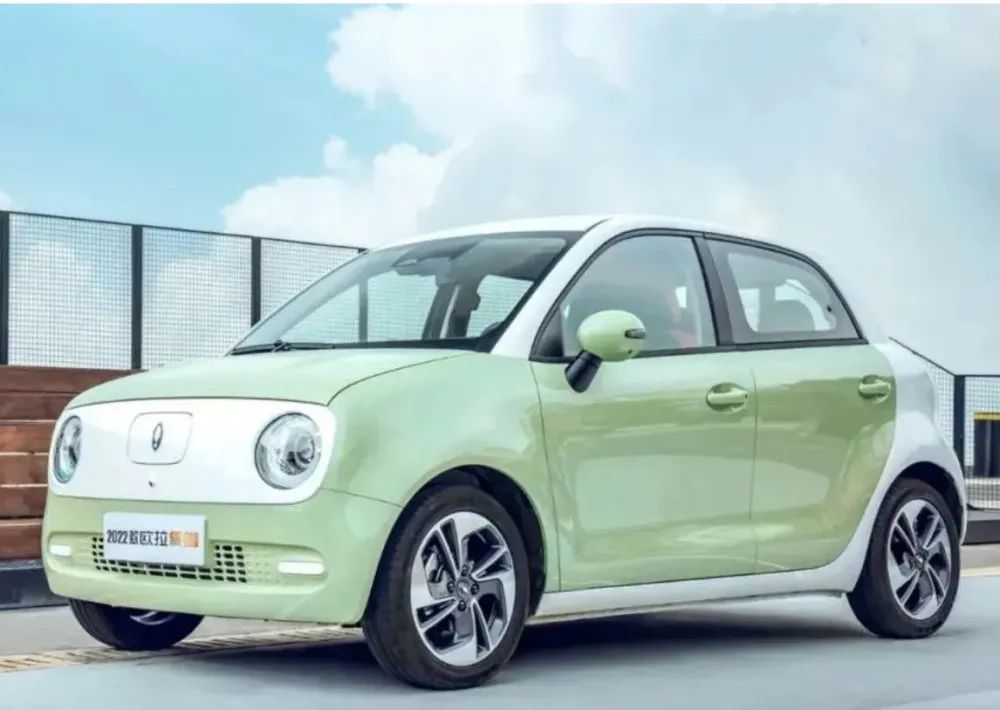
As the report above suggests, it is a fact that the prices of raw materials for electric vehicle batteries have risen sharply. Here, the author takes lithium metal, the main raw material for power batteries, as an example. According to data from the Shanghai Nonferrous Metal Network, as of March 21, the spot price of lithium metal was 3.134 million yuan per ton, an increase of over 120% compared to the beginning of the year. In addition, according to data from Wind, the price of lithium carbonate, the main raw material for power batteries priced at 50,000 yuan per ton a year ago, has now skyrocketed to around 500,000 yuan per ton, an increase of 73.8% from the beginning of the year and 479.3% year-on-year.
In the situation where raw material prices have risen sharply, it is inevitable that the price of power batteries will also increase. Additionally, lithium batteries account for almost 40% of the cost of new energy vehicles. Car manufacturers downstream in the industrial chain are passing on the pressure to the end-users. “We have no choice but to raise the price. The price of upstream raw materials has risen dramatically,” said a Guangqi Aihan dealer who was interviewed by the media.
“Due to the influence of raw materials, the price increase this year may not be limited to two rounds, and price increases in the near future are likely to become the norm,” said a BYD Auto representative.
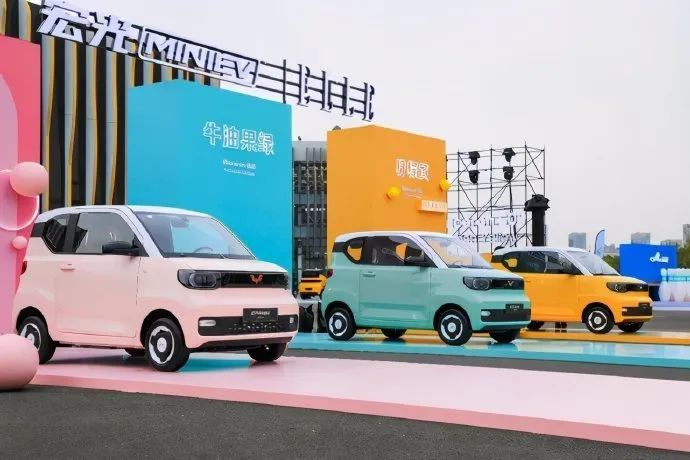
“The rise in battery costs is the main reason for the price increase of new energy vehicles, and subsidy reductions, significant increases in fuel prices, and chip shortages are also contributing factors,” said an industry insider.
It’s worth mentioning that this view is not without reason. On December 31, 2021, the Ministry of Finance, the Ministry of Industry and Information Technology, the Ministry of Science and Technology, and the National Development and Reform Commission issued a notice on the financial subsidy policy for the promotion and application of new energy vehicles in 2022, which clearly stated that subsidies for passenger cars in the field would be reduced by 30% this year. Simply put, the subsidy amount for pure electric vehicle models with a range of more than 400km will be reduced by 5,400 yuan, and the subsidy for models with a range of 300-400 kilometers will be reduced by 3,900 yuan. Plug-in hybrids and extended-range vehicles will be reduced by 2,040 yuan.
Faced with changes in new energy vehicle subsidy policies, the past practice of automakers has been to introduce limited-time price guarantees and bear the price difference caused by subsidy reductions from their own pockets in order to achieve sales promotion goals. But with the significant rise in fuel prices this year, in a competitive environment for new energy vehicles, car manufacturers naturally have the confidence to no longer continue to bear this cost.
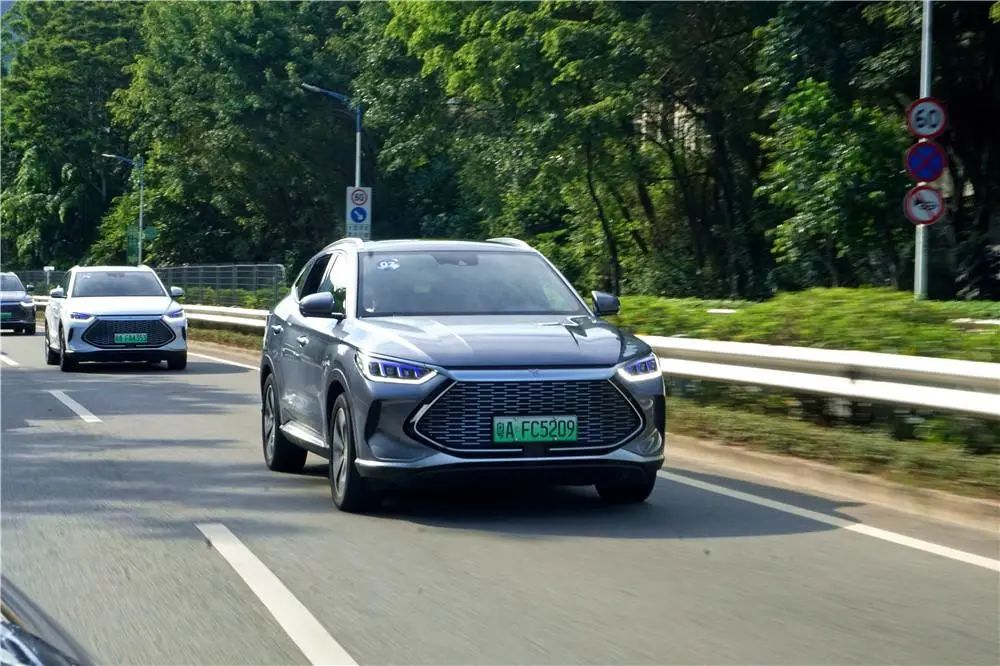 ## How do consumers view it?
## How do consumers view it?
For car manufacturers, the chip shortage has increased their production costs to some extent. “Some car makers have to buy chips at high prices on the market to solve the chip problem,” said Zhang Xiang, a researcher at the Automotive Industry Innovation Research Center of North China Industrial University.
At the same time, while car makers express their “unwillingness” to the current wave of price increases, many consumers also feel “caught off guard.”
“I can only say that when there are discounts, you have to act decisively. If you hesitate for a while, you have to regret it, like me.” “I should have ordered a car early if I knew it earlier.”… Many consumers leave such messages under the announcements of price increases by various car manufacturers. Those consumers who paid a deposit before the price increase are grateful that they “have made money” by buying the car.
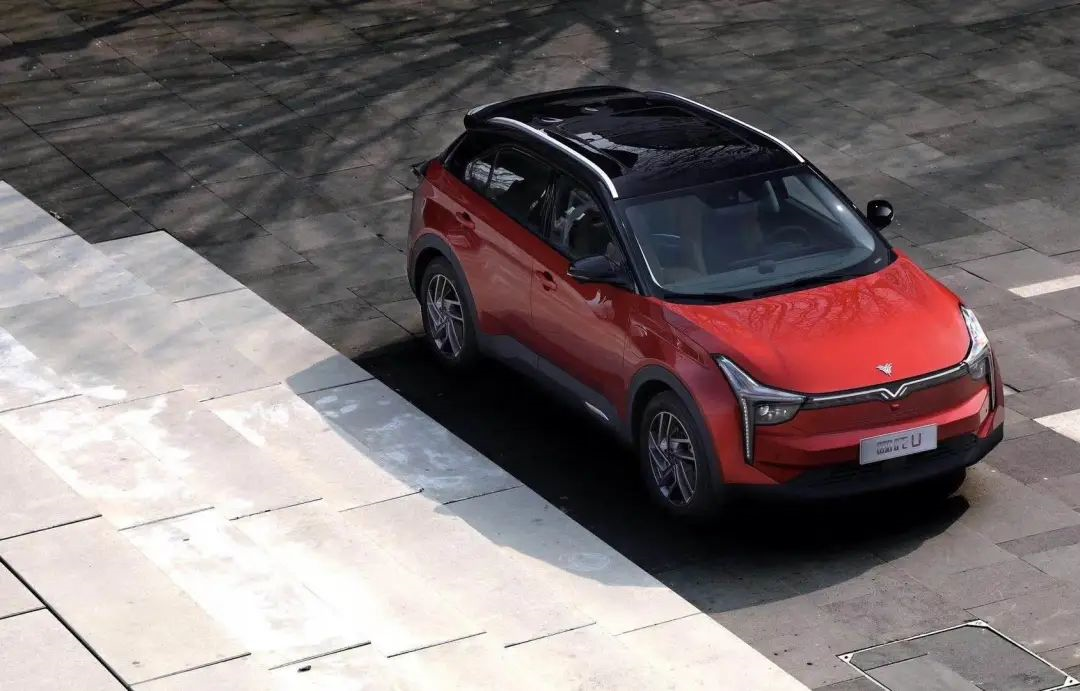
This is the online public opinion, but what is the actual reaction of consumers when they buy a car?
“After the announcement of the price increase, our sales have not been affected. On the day of the announcement of the price increase, we received more orders, and our colleagues worked overtime to process the orders,” said a staff member of the NETA Automobile 4S store. Considering that the price increase is not very high, the selling price may not continue to rise, and the policy of tax exemption for purchasing new energy vehicles will be cancelled next year, many potential consumers no longer choose to wait and see.
At the same time, the staff member also told me that the delivery time of new cars is a bit long besides the price increase. “If you place an order now, you have to wait at least two months to pick up the car, and BYD and XPeng automobiles have an even longer waiting time.”
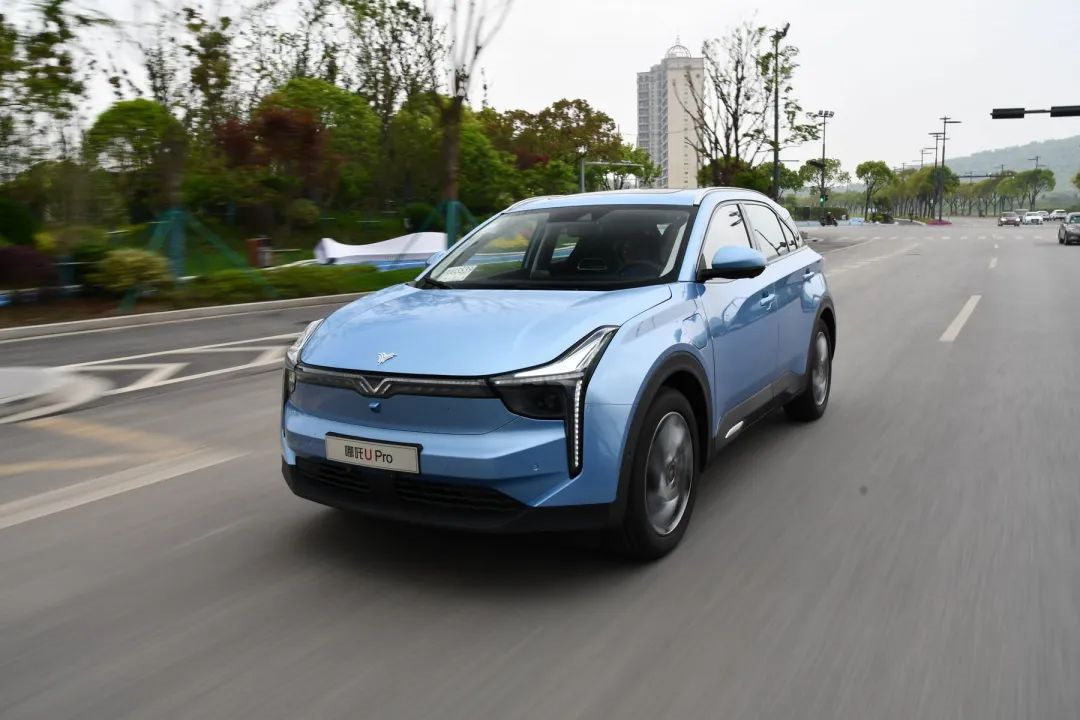
In fact, not only NETA Automobile, some car companies have experienced an increase in sales volume after the price adjustment. Recently, GAC Group mentioned in the investor relations activity record that 3-5 days after the price adjustment of GAC Aion, the daily order volume returned to the level before the price adjustment. The person in charge of BYD also said that “with the improvement of brand and product strength, price is no longer the first factor for consumers who choose BYD models. After the price adjustment, the price of the model did not break away from the budget of the majority of users, so the sales volume was not affected.”
The statements of car manufacturers have been confirmed by consumers. “I have seen the news of the price increase. Judging from the current increase in battery raw materials, it should be difficult to reduce the price in the future. Moreover, because of the wait-and-see before the Spring Festival, the price has already increased once, and it may continue to rise if you wait. Although it feels a bit of a loss now, I still decide to buy it,” said a consumer at the NETA 4S store. The consumer’s statement is quite similar to my friend’s opinion.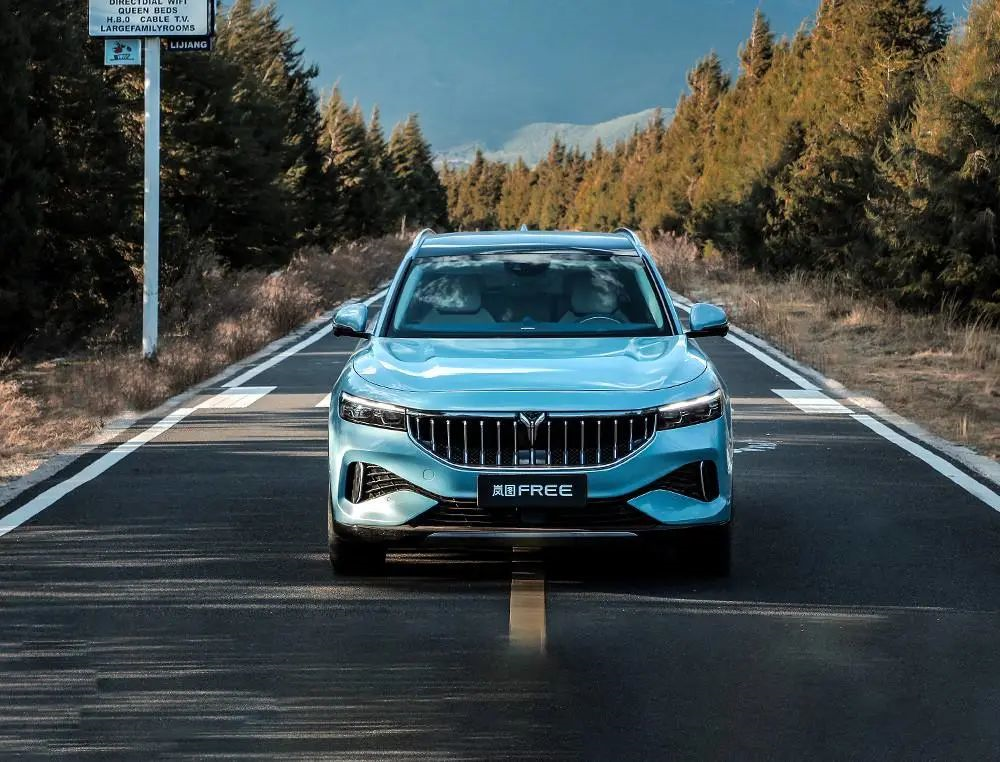
According to the manufacturers and market reactions, the price increase of “this pot of cold water” seems to have not cooled down the market.
However, this does not mean that consumers have no objection to the price increase. “If it keeps going up, it might as well buy a fuel car.” Many consumers have left such comments under the price increase announcement of car companies.
It is worth mentioning that some car companies, including Ideal, NIO, and Voyah, were quite cautious during this round of price hikes, as they seemed to foresee that consumers would have “dissatisfaction”. They did not choose to follow the trend and raise prices.
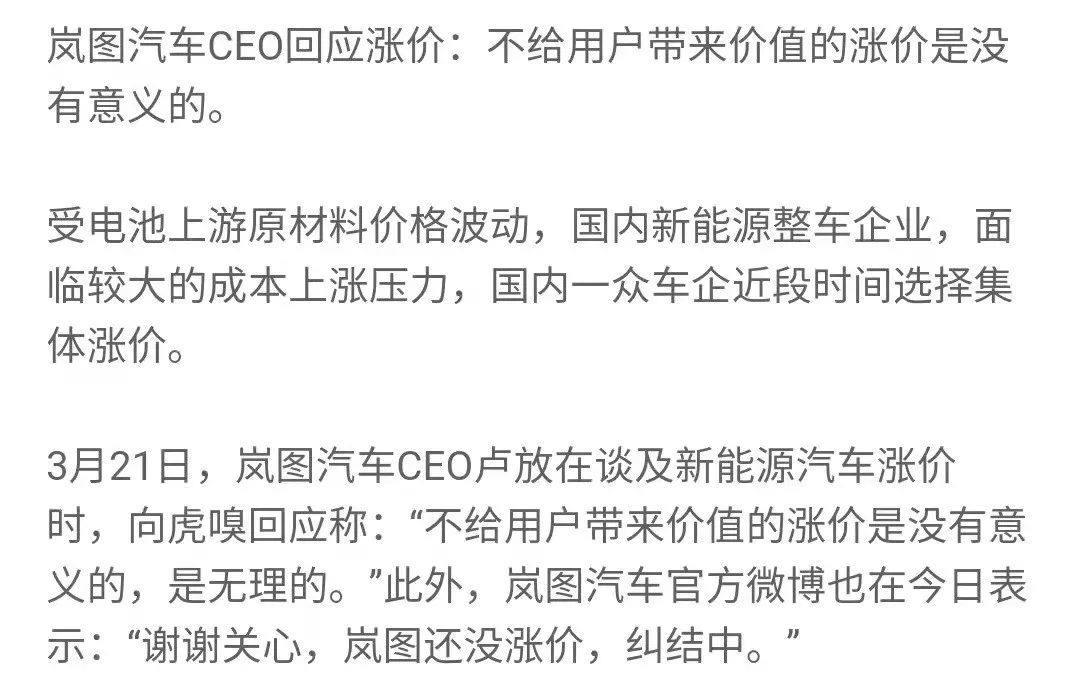
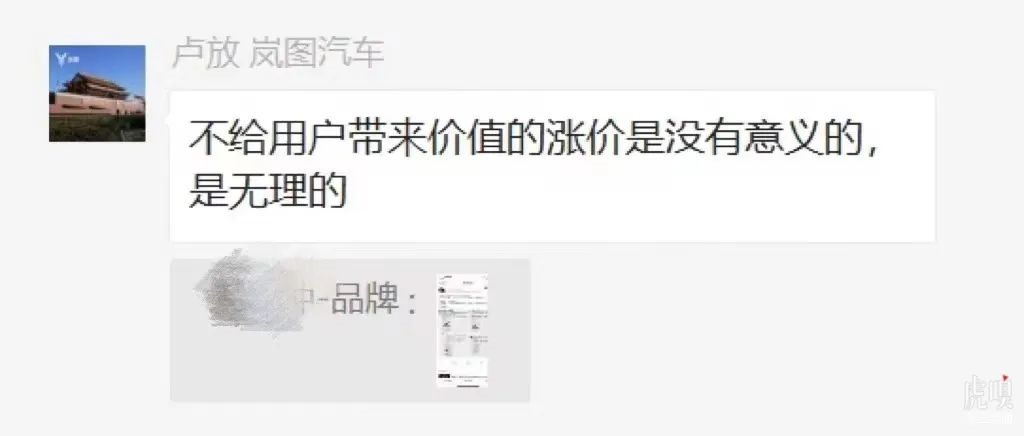
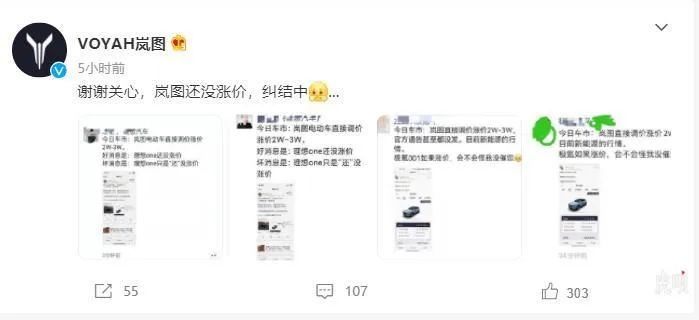
In particular, Voyah Automobile CEO Lu Fang pointed out that “price increases that do not bring value to users are meaningless and unreasonable, and whether to adjust prices in the future is still in discussion.”
In other words, although this round of price increases has not had a significant impact on consumer terminals, it is not what consumers want to see. However, considering license plates, oil prices, and the difficulty in predicting the price trend of new energy vehicles in the future, many consumers can only choose to “pay extra” to buy a car.
Is it possible to reduce prices?
Regarding this price increase wave of new energy vehicles, many consumers have left comments under car companies’ announcements of price increases: Is there still a possibility of price reductions in the future?
Before answering this question, we need to look at a set of data. Public information shows that China’s lithium mines mainly rely on imports, with imported lithium raw materials accounting for 65% in 2021. However, due to the impact of the industry cycle, many overseas mining companies have gone bankrupt before, and those still operating cannot fully open due to the impact of the epidemic.
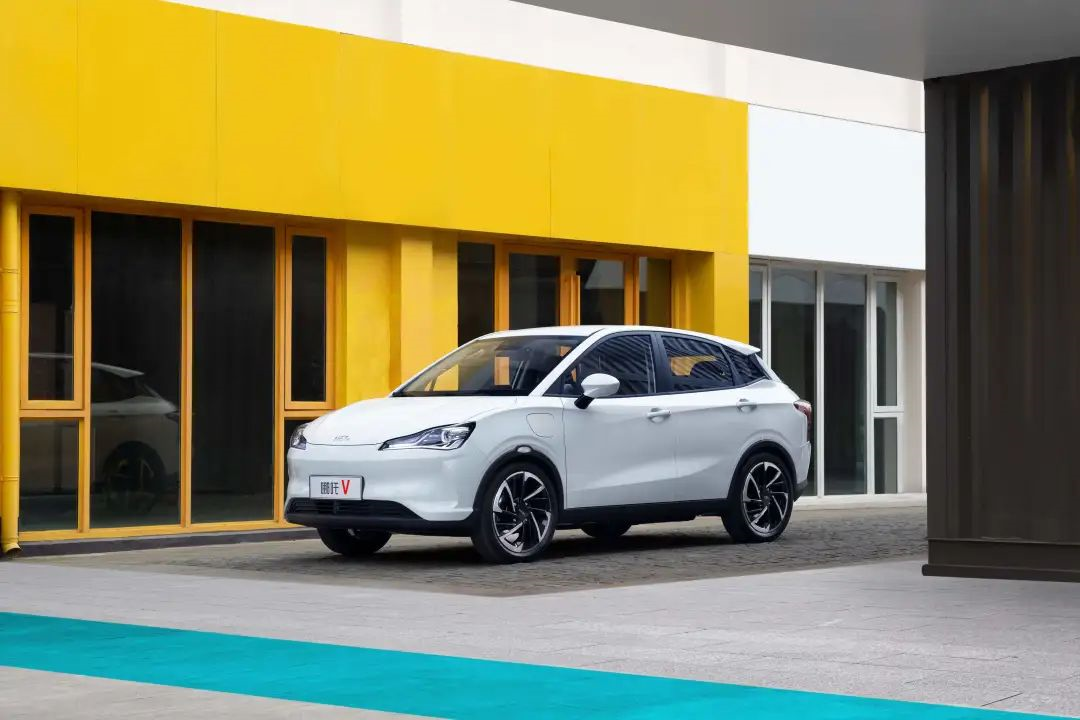
Therefore, Guotai Junan pointed out in the research report that “the increase in supply will not appear quickly in the short term (more affecting the long-term supply expectation), and the spot price of lithium is expected to be difficult to fall in the short term.”It is worth noting that, in addition to lithium, the prices of cobalt and nickel, which are the main materials for power batteries, have also risen sharply. Among them, the price of cobalt has risen from less than RMB 300,000 / ton at the beginning of last year to around RMB 560,000 /ton, almost double. The sharp rise in nickel prices has also led to changes in the price of nickel sulfate, and in turn caused the price of ternary lithium batteries to rise by RMB 31 to RMB 47 per kilowatt hour.
However, it is somewhat awkward that while the prices of raw materials for power batteries are soaring, new energy vehicles are also enjoying booming production and sales.
Taking China’s new energy vehicle market as an example, according to data from the China Association of Automobile Manufacturers, in January and February of this year, the retail sales of new energy vehicles in China increased by 137.5% and 180.5%, respectively, compared with the same period last year, reaching 352,000 units and 272,000 units. Against this backdrop, the China Passenger Car Association has also raised its sales expectations for new energy passenger vehicles this year from 4.8 million to 5.5 million units, with an estimated penetration rate of around 25%.
In terms of the global market, according to calculations by industry insiders, global sales of new energy vehicles are expected to exceed 10 million units this year. In other words, even if the production of carbonate lithium can increase by 170,000 to 180,000 tons this year, there is still a gap of around 30,000 tons in the face of huge demand.
Considering the continuous increase in raw material prices and the strong demand for new energy vehicles, it seems somewhat unrealistic for the price of new energy vehicles to fall in the short term.
However, this does not mean that the price of new energy vehicles will continue to rise in the future. Specifically, in order to cope with the pressure of tight supply of power batteries caused by many uncertain factors, domestic vehicle companies have not only begun to adopt various methods such as investment, shareholding, and cooperation with upstream power battery companies to stabilize the supply chain, but battery companies and host factories have also begun to favor the lower-cost lithium iron phosphate batteries.
Data shows that in January and February of this year, the installed capacity of lithium iron phosphate batteries in the domestic market was 16.7 GWh, far exceeding the 13.1 GWh of ternary lithium batteries. In terms of production, the total output of power batteries in February was 31.8 GWh, of which the output of lithium iron phosphate batteries was 20.1 GWh, accounting for 63.1%.
In addition, lithium batteries are not the only technical route in the new energy race. In other words, as the penetration rate of new energy vehicles continues to increase, technologies such as hydrogen fuel cell and sodium batteries are bound to accelerate commercialization. The acceleration of new technologies is likely to trigger a new round of price wars among automakers.
This article is a translation by ChatGPT of a Chinese report from 42HOW. If you have any questions about it, please email bd@42how.com.
